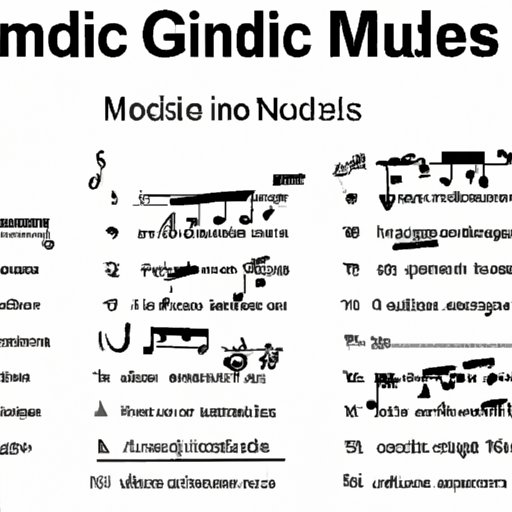
Learning to Read Music Notes: 7 Steps for Mastering the Basics
Experienced musicians know that learning how to read music notes is a crucial skill for developing as an artist. Mastering the basics of music notation can be challenging for beginners, but it opens the door to endless opportunities for creativity and growth. In this article, we’ll provide a step-by-step guide for learning how to read music notes. By following these 7 steps, anyone can gain a solid understanding of the principles of music notation and develop the ability to read sheet music with confidence.
Step 1: Beginner’s Guide to Reading Music Notes
If you’re new to reading music notes, it can seem overwhelming at first. However, understanding a few key concepts can help demystify the process. First, let’s start with the staff, which is the set of five horizontal lines that music notation is written on. The lines and spaces on the staff represent different notes, which are named after the first seven letters of the alphabet. Different clefs (symbols at the beginning of a staff) can help identify which notes correspond to which lines and spaces. Finally, rhythmic notation is used to indicate musical duration. By understanding these foundational concepts, you’ll be well on your way to reading music notes with ease.
Step 2: Tricks and Tips for Mastering Music Note Reading
Reading music notes requires a lot of practice, but there are a few tricks and tips that can make the process easier. For example, breaking up the notes and rhythms into smaller groups can make them more manageable. Using visual imagery and catchy rhymes can also help you remember difficult notation. It’s also important to practice consistently, even if it’s just for a few minutes each day. By incorporating these strategies into your practice routine, you’ll see faster progress and build your skills more quickly.

Step 3: Learning to Read Music Notes as an Adult
Many adult learners are intimidated by the prospect of learning how to read music notes, especially if they’ve never played an instrument before. However, there are unique challenges that adults face that children do not. For example, adult learners may have less free time and may feel self-conscious about their ability to learn a new skill. To overcome these challenges, it’s important to set realistic goals, seek out a supportive community, and practice self-compassion. Don’t be discouraged if you don’t make progress as quickly as you’d like – remember that learning a new skill is a process, and everyone starts somewhere.
Step 4: Using Mnemonic Devices to Remember Music Notes
Music notation can be complex and difficult to remember, but mnemonic devices can help simplify the process. Acronyms, rhymes, and other memory aids can help you remember specific notes and rhythm patterns. For example, the acronym FACE can help you remember the notes of the spaces on the treble clef (F, A, C, E). By creating your own personalized mnemonic devices, you can make the process of learning music notation more fun and engaging.
Step 5: Music Note Reading Apps and Software
If you’re a tech-savvy learner, there are a variety of mobile apps and software programs available to help you learn how to read music notes. From interactive games to virtual flashcards, these tools can make the process of learning notation more interactive and engaging. Some popular options include Music Tutor Sight Reading, Perfect Ear, and Note Trainer. Experiment with different apps and programs to find the one that works best for you.
Step 6: Common Mistakes to Avoid When Reading Music Notes
When learning how to read music notes, there are several common mistakes that beginners make. For example, many learners struggle with correctly identifying the note duration or keeping up with the tempo. To avoid these errors, it’s important to approach each piece of music with a strict attention to detail. Take your time reviewing the score, and don’t be afraid to ask questions or seek out resources if you’re unsure of something.
Step 7: Advanced Music Note Reading Techniques
Once you’ve mastered the basics of music notation, you can start to explore more advanced techniques. For example, learning how to recognize chord progressions and key signatures can enhance your understanding of how different musical elements interact. By continuing to practice and learn, you can become a more versatile and knowledgeable musician.
Conclusion
Learning how to read music notes is a challenging but rewarding process. By following these 7 steps, you can gain the skills and confidence needed to read sheet music with ease. Remember to be patient with yourself, practice consistently, and seek out additional resources as needed. With hard work and dedication, you can take your musical abilities to new heights.




